5. Rich shoreline environment created by unique geological formations
- Theme B:
Learning about and enjoying the natural environment from Mt. Apoi's alpine plants

Samani Town (Mt. Apoi Geopark) has seashore and cobble beach areas with various landforms. A cobble beach covered with peridotite rocks and other stones is found near Mt. Apoi, and along the sea cliffs is a rocky area with highly rugged terrain reefs. Wave-cut platforms have developed around the rock formations along the western coastline. The warm Tsugaru ocean current flows from the Sea of Japan through the Tsugaru Strait into the waters off Hidaka, supporting life in local seashore and cobble beach areas. In the vicinity of Cape Erimo to the east, the Oyashio cold current (also known as the Kurile current) flows to the south. As a result, the waters off Samani are home to living creatures from both warm and cold climate zones. Around 90 seaweed species and 120 creature species are known to inhabit the area.
Mitsuishi Kombu kelp (Laminaria angustata) is the main seaweed type found here. It is used to make soup stock (a staple of Japanese cuisine), and has been shipped nationwide as a traditional local specialty for 400 years.
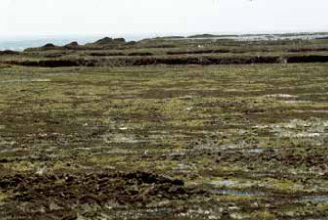
Wave-cut platforms stretching behind Cape Enrumu

Cobble beach near the trailhead to Mt. Apoi
Typical seaweed types
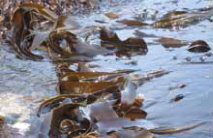
- Mitsuishi kombu (Laminaria angustata Kjellman)
- This belt-like brown algae grows to 2 - 6 meters in length and 6 - 10 centimeters in width throughout the year. It tends to grow in colonies and form submarine forests, and is sold for consumption under the name of Hidaka Kombu.
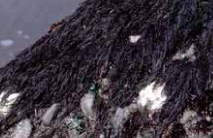
- Hornwort (Ceratophyllum demersum)
- This thin brown cylindrical algae is edible, and grows to a length of 15 - 30 centimeters in colonies along shore reefs.
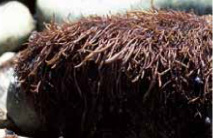
- Fukuro-funori (Gloiopeltis furcata)
- This edible red algae grows to a length of 2 - 7 centimeters in colonies on rocks and boulders.
Small marine animals

- Japanese shore crab (Hemigrapsus sanguineus)
- These arthropods have no hair on their squarish carapace, which is around 3 centimeters wide. They are often found together under boulders.
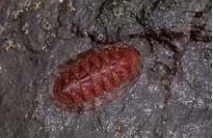
- Ezoyasurihizaragai (Lepidozona albrechti)
- This mollusk grows up to about 5 centimeters in length and around 3 centimeters in width. It attaches itself to the underside of boulders.
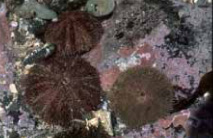
- Ezo horse-dung sea urchins (Strongylocentrotus intermedius)
- These echinoderms have a shell with a diameter of around 9 centimeters. Their spines are shorter than those of the northern sea urchin (Strongylocentrotus nudus) and have various colors. They inhabit areas outside tidal pools and the intertidal zone , and are named for their resemblance to horse dung.



